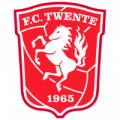Here we go again. Formula 1 is back this weekend for its 68th season, and this one promises to be one of the fastest ever.
The new formula involves bigger, wider, faster cars which will aim to cut lap-times by up to five seconds, depending on the track and conditions.
Engine development is now allowed throughout the season, coupled with unrestricted aero development and wider tyres, the cars will pull around 5g through the corners and expose their driver to a torrent of forces not seen since the V10 era of the early noughties.
It is hoped that the new regulations will close up the field, and end the period of utter Mercedes domination of the past three seasons. Ferrari and Red Bull are expected to be the closet challengers to the World Champions, and each package has their own strengths and weaknesses.
For example, in testing, Ferrari set the best time overall, Kimi Raikkonen on the final day, and were quicker than the Mercedes on some occassions. Of course, it is way too early to say Ferrari are ready to topple their rivals, but the gap between the rest and the SIlver Arrows has narrowed. By just how much is the question.
-2.JPG)
However, despite this, and as was seen in pre-season testing, it will be harder to overtake another car and wheel-to-wheel racing will suffer as a result. More downforce equates to a harder time following the car ahead, and natrually, F1 decided to go down this route, because that is what F1 does, or should that be F1 did, seeing as the sport has new owners in Liberty Media.
What has changed from last season?
Obviously aside from the new regulations, the biggest thing to change in F1 since the flag fell in Abu Dhabi 118 days ago, is that the sport has been brought by American Media giants Liberty Media, which means the end of Bernie Ecclestone, who has been replaced as F1 CEO by Chase Carey.
Carey's team will look to make the sport more appealing and more profitable and sell the unique product F1 is better to the global audience.
World Champion Nico Rosberg shocked the world by retiring five days after clinching the crown, and Valtteri Bottas has stepped up to Mercedes to replace him, whilst Felipe Massa unretired to drive the Williams alongside the only rookie on the grid this year, Canadian Lance Stroll,
Elsewhere, Jenson Button has retired, his McLaren seat being taken by Stoffel Vandoorne, whilst the rest of the grid remains largely unchanged, although team technical directors have been playing musical chairs, with Paddy Lowe now at Williams and James Allison at Mercedes.
The Track
Set around a lake in Victoria, Melbourne, the circuit will host it's 22nd Grand Prix this season, first doing so in 1996. Melbourne has seen the career of many of the top drivers begin, with Lewis Hamilton, Fernando Alonso, Kimi Raikkonen and Massa being among those to start their careers in Australia.
The track itself is a mix of public roads and track, which come together to create a good test for the car and driver, with sweeping turns, fast chicanes and clumsy slow-speed corners which require a balanced set-up. There are two DRS zones, along the pit-straight and on the run down to turn three.
.JPG)
Where will I see some overtakes?
The most popular overtaking spots are into turns one, three, nine and 13, which are the four main braking zones on the track.
What tyres are Pirelli bringing?
For the first time, the Ultrasoft tyre will make its debut in Australia, and be used in tandem with the Supersoft and Soft compound tyres.
As ever Pirelli have brought the Intermediate and Wet tyres to the race, just in case of rain.
For the first four races of the season, Pirelli have pre-selected the mixture of compounds that each team and driver will get.
From the Spanish Grand Prix, they will be free to mix their compounds as they did last season, but owing to the comapny not being 100& sure on the forces the new tyres are expected to go through, they have decided to play it safe, until it gets some actual on-track data which it can then use.
This time out, teams will have seven sets of the ultrasofts to use, four of the supersoft and two sets of the soft tyres.
Will it rain?
Current forecast predict that Friday practice will be overcast, and not give the teams that much useful running ahead of Sunday's expected dry and sunny grand prix.
During qualifying on Saturday afternoon, there is the chance of showers, albeit a small one.
When is it on?
The first session of the 2017 F1 season gets underway at 12:00pm local time (01:00am UK time) on Friday morning, with qualifying and the race both underway at 16:00pm local time (06:00am UK time) on Saturday and Sunday morning. Remember the clocks go forward on Sunday morning, so don't oversleep.
As ever, Sky Sports F1 will have full and live coverage of the entire Grand Prix weekend, whilst Channel 4 will have extensive highlights later on Saturday and Sunday morning respectively for freeivew viewers.
First Practice - Friday - 01:00am - 02:30am
Second Practice - Friday - 05:00am - 06:30am
Third Practice - Saturday - 03:00am - 04:00am
Qualifying - Saturday - 06:00am - 07:00am
Race - the 2017 F1 season and 58 laps of the Australian Grand Prix get underway at 06:00am on Sunday morning.
All times UK.






































